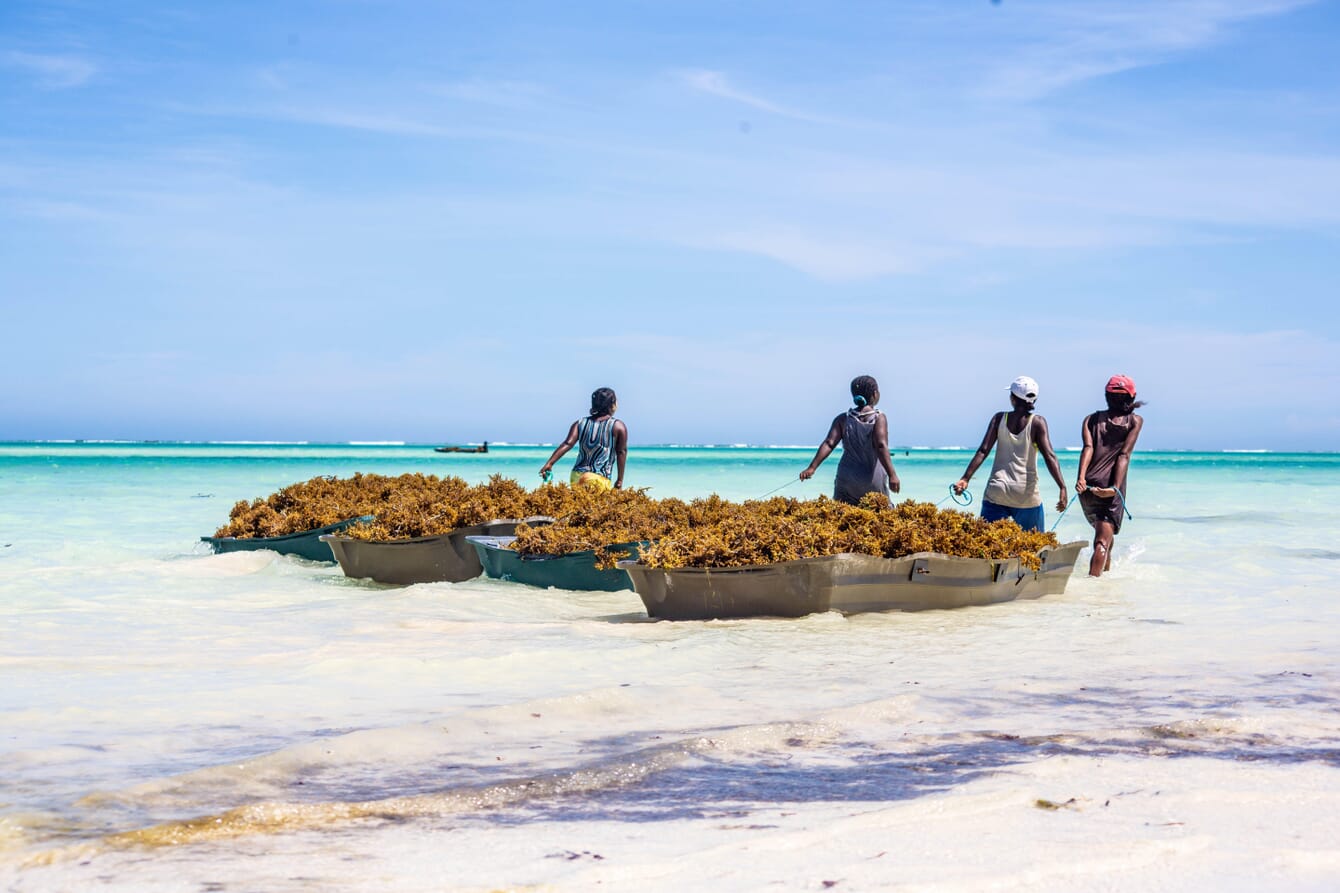
© Faniry Njava
Although its roots go back further, the network’s current incarnation was developed by Frédéric Pascal, who joined the seaweed sector after years working with major humanitarian NGOs in some of the world’s most volatile and repressive regions – including Afghanistan, Darfur and North Korea.
“My brother had been doing research with the Vezo people in Madagascar and had started a seaweed venture. When he decided to leave, I felt it was too bad to abandon the project, so I switched careers,” he recalls.
One of Pascal’s key partners is Sébastien Jan, a fellow Frenchman, who first arrived on the shores of the Indian Ocean after graduation.
“I fell in love with seaweed from a young age,” Jan recalls. “Growing up in Brittany, I used to harvest seaweed with my grandparents, without knowing what it was used for. Later I studied tropical agronomy and after finishing my studies in 2003, I was hired to set up a seaweed business on a remote island off the east coast of Madagascar called Nosy Ankao. We successfully grew the operations there and expanded in Mozambique.
“In 2009, I decided to leave to experience something different and this is when I started working with Cargill. First I worked in their cocoa and chocolate operations and later on I switched to their seaweed procurement department. where I was responsible for supporting seaweed suppliers, opening new sourcing areas – including Madagascar.
“That’s when I initiated the relationship with Ocean Farmers and in 2019 Fred asked if I’d join them to develop seaweed farming on the east coast of Madagascar,” Jan explains.
Two years later he’d moved to Sainte Marie island, where he set up Nosy Boraha Seaweed and began to oversee the development of the model that Pascal had deployed so effectively in the west.
Building Ocean Farmers
Ocean Farmers was formally established in 2017, under the umbrella of the Réunimer Group, a seafood conglomerate based on Réunion island.
As Pascal explains: “Originally, our family of companies were in fisheries – collecting fish and octopus from community fishermen. But we realised that in the context of poverty, population growth and climate change, this was not sustainable. So we looked for alternatives and then we started small projects with sea cucumbers and seaweed farming in 2010–11.”
Although backed by a major seafood business, Ocean Farmers decided to adopt a community-based approach, providing seaweed cultivators with ropes, stakes, training, technical support and guaranteed market access – all under strict sustainability conditions.
“We forbid things like cutting mangroves for stakes or using children on the farms,” Pascal stresses. “If farmers don’t follow best practice, we can sanction them. But equally, we absorb the risks they would normally face. We provide stability.”
“That’s what makes our model very different from Indonesia or the Philippines, where farmers sell to traders who capture the margins. We integrate everything: farming, risk management, innovation, traceability. We can guarantee exactly which village a bale of seaweed came from. For our customers, that’s very powerful,” Jan adds.
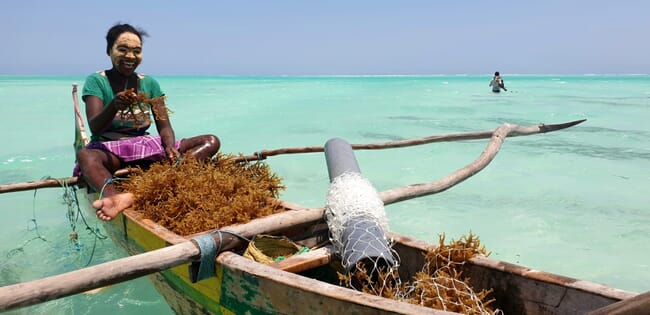
© Fred Pascal
Empowering coastal communities
The human impact is also significant. On Madagascar’s arid west coast, where agriculture is non-existent and rivers run dry for much of the year, seaweed farming offers an alternative to the pursuit of dwindling fish populations or deforesting the land for charcoal.
“Seaweed farming represents a profound shift: from relying solely on foraging the sea to also cultivating it as a renewable resource. For the Vezo people, this new livelihood builds on their maritime heritage while offering a lifeline against poverty,” reflects Pascal.
On Sainte Marie, by contrast, life has traditionally been less harsh – but Covid-19 revealed the fragility of relying on tourism and fisheries.
“When tourism collapsed, seaweed was the only activity left. Now the local economy has three pillars: fisheries, tourism and seaweed farming. They complement each other, and seaweed has become a source of resilience,” Jan explains.
Women, in particular, have benefited from the new sector.
“In Sainte Marie alone, more than 1,000 people are now working in seaweed, many of them women, either directly in farming or in related tasks. It’s a real source of empowerment,” Jan reflects.
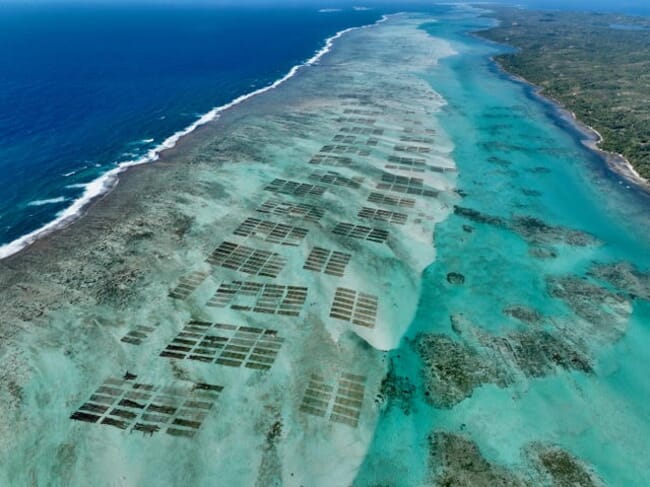
© Sebastien Jan
Scaling up and innovating
Ocean Fields Connection currently accounts for up to 85 percent of Madagascar’s seaweed production, and expects to harvest 35,000 tonnes of fresh seaweed in 2025 – with plans to double this output within five years.
However, as Pascal and Jan emphasise, their main focus is on quality, sustainability and innovation, rather than scale for its own sake.
The team is experimenting with technology including drones and environmental sensors. And they are also developing Africa’s first seaweed hatchery, in a bid to breed new Kappaphycus strains that are resistant to disease and climate-related issues.
“We’re still using a seaweed strain that originally came from the Philippines, but was first imported into Tanzania, then to Madagascarin 1989. That makes us vulnerable. So we’re working to develop new strains from Madagascar’s native seaweed,” Pascal explains.
Ocean Farmers are also developing a wide range of partnerships – with NGOs like WWF and Cétamada (a marine mammal conservation organisation); the French research institute IRD; and donors such as USAID (prior to the Trump administration’s decision to halt the programme) and the German development bank KfW.
“We started with self-funding, but thanks to our social and environmental impact, we’ve been able to attract international support. That recognition has been key,” Pascal reflects.
And it’s not just NGOs and impact investors who are taking note of Ocean Farmers’ model – last year, they hosted Madagascar’s first national seaweed workshop in Antananarivo, bringing together the government, the Global Seaweed Coalition, and major industry players like Cargill.
According to Pascal, the event also helped spur the creation of a UN taskforce on seaweed farming, with Madagascar becoming the first country to commit.
“This recognition of our model is a milestone. We’ve been certified under Cargill’s Red Seaweed Promise, we’re featured in Vincent Doumeizel’s Seaweed Revolution, and we’re seeing similar models emerging as far away as Venezuela. It shows we’re on the right track,” Jan reflects.
"What we have achieved is to put people around the same table and get things moving,” Pascal adds.
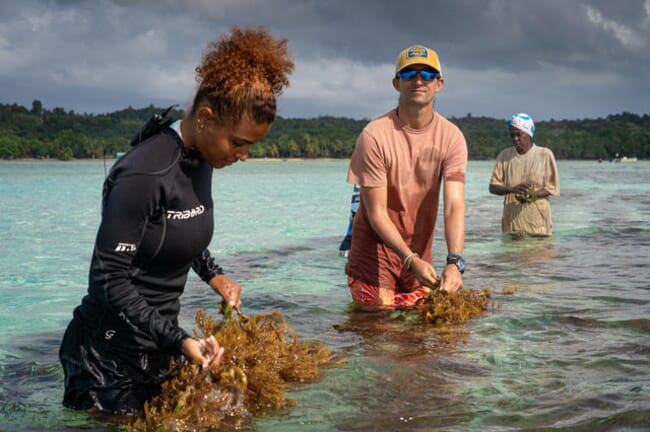
© Viviane Rakotoarivony
Challenges on the horizon
Despite the success of Ocean Farmers’ and Nosy Boraha Seaweed, there are still plenty of obstacles to be cleared: the global carrageenan markets are volatile, squeezing margins; climate variability has brought disease and pests; and building robust local governance structures is a slow process.
“In Madagascar, governance is really challenging. Education levels are low, local politics can be chaotic, and associations often collapse. Empowering farmers to form strong cooperatives is a ten-year project. It’s essential, but it takes time,” Pascal observes.
Diversification of markets – in particular exploring options for adding value to seaweed – is another priority.
“Right now we sell mostly to big players like Cargill. But we don’t want to export raw materials forever. We’re piloting production of seaweed-based biostimulants for agriculture, and running 30 field trials,” Pascal explains.
He is aware that developing processing capacity, technology and skill requires significant funding, but says that they might have a few options to choose from.
“We’ve had interest from investment funds and impact investors. In a still-maturing regional ecosystem, the combination of solid results and clear impact appears to be attracting attention,” he notes.
Looking ahead
Despite the challenges both men are optimistic about what their model can achieve.
“In 10 years, I would like to see a network of SMEs sharing the same approach, the same philosophy, the same DNA, to work as a worldwide alliance. I would very much like to see seaweed producers around the globe gathering under the same banner and joining forces,” reflects Pascal.
“We really share that same vision. And maybe, on my side, what I’d also really like to do is to integrate the whole value chain. Not just producing seaweed but also valorising and selling seaweed products to final customers. I think that would really also be one of our targets,” Jan adds.
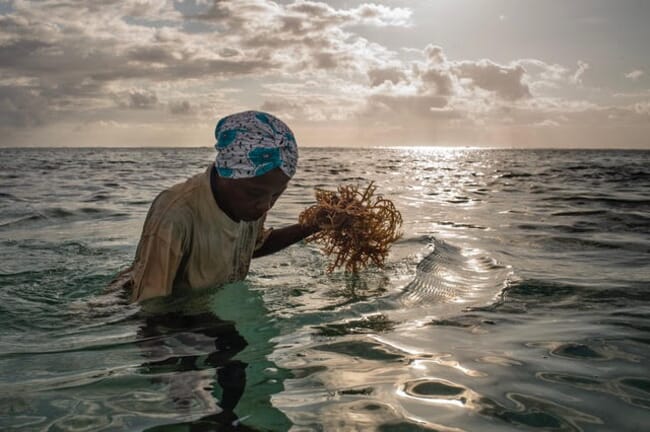
© Viviane Rakotoarivony


